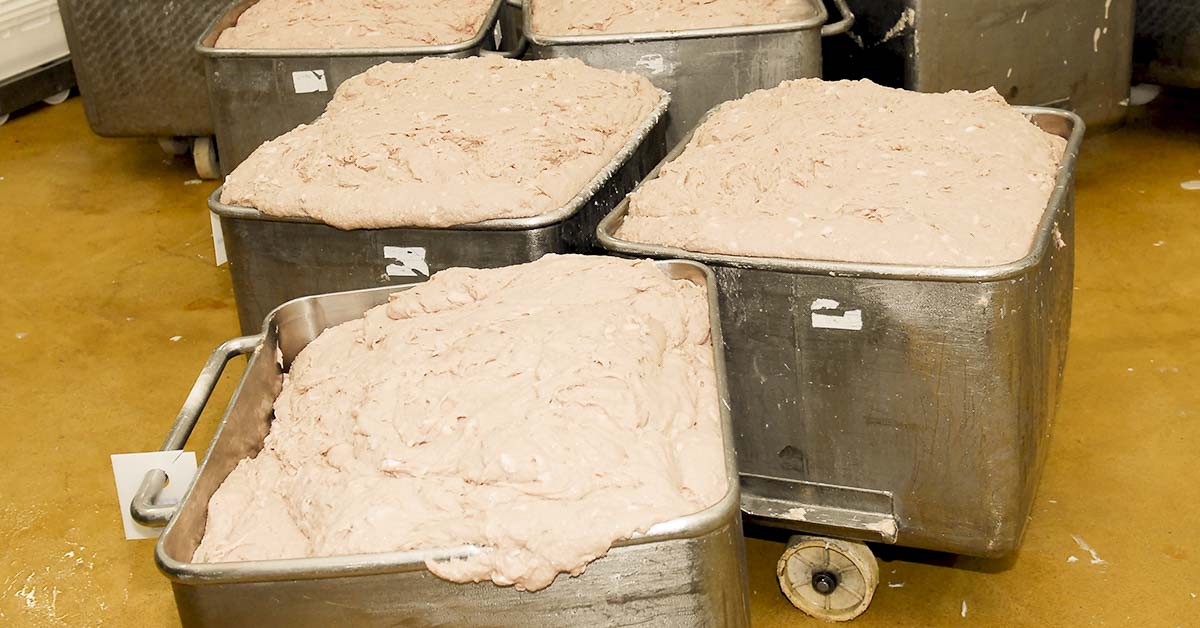As the holiday season approaches, tables across America will be adorned with a plethora of traditional dishes. However, amidst the excitement, one vegan meat dish has sparked controversy; Tofurkey.
Introduced in 1980 as an alternative for vegetarians and vegans during Thanksgiving, Tofurkey has recently been under scrutiny due to a viral video showing its production process. The video, dissecting the intricate factory process, has sparked a wave of reactions across social media.1
The production line at Turtle Island Foods, the company behind Tofurky, showcases a detailed procedure involving a team crafting tofu and wheat-based turkey substitutes. While some have expressed appreciation for the product, others have found the manufacturing process unappealing, leading to a flurry of social media comments, ranging from disdain to humor.
The scrutiny over Tofurky’s production sheds light on the broader landscape of meat alternatives that have rapidly transitioned from niche to mainstream.2 Companies like Impossible Foods and Beyond Meat have struck partnerships with major fast-food chains, revolutionizing the industry and capturing the attention of consumers.
Tofurkey and Meat Alternatives: What You Need to Know
1. Meat Alternatives: A Shift in Approach
Meat alternatives distinguish themselves by targeting meat-eating consumers rather than just vegetarians or vegans. Unlike traditional veggie burgers, these products aim to replicate the taste and texture of meat, attracting a broader audience.
2. Taste Matters
The success of meat alternatives hinges on taste. While some rave about the authentic flavor, reviews remain mixed, highlighting the subjective nature of taste perception.
3. Environmental Impact
One of the primary motivations behind meat alternatives is their potential to reduce the environmental footprint of meat production. However, their current market share remains small, limiting their impact on larger environmental concerns.
The Future of Tofurkey and Meat Alternatives
While meatless meat products have gained momentum, they face challenges in scaling production and achieving widespread adoption. As consumers continue to evaluate these alternatives based on taste, availability, and pricing, the industry’s trajectory remains in their hands.
As the debate around vegan meat production intensifies, it prompts reflection on the evolving landscape of dietary choices. Whether these alternatives can truly revolutionize the food industry or remain a niche preference is a question only time and consumer preferences can answer.
Environmental Impact
The promise of reducing the environmental toll of traditional meat production has been a driving force behind the surge in meat alternatives. However, their current market share remains modest, limiting their tangible impact on broader environmental concerns such as greenhouse gas emissions and land use.
Despite their growing popularity, meatless meat products face hurdles in scaling production to meet the rising demand. As major meat companies enter the fray and competition intensifies, the industry is poised for growth, potentially driving down prices and improving accessibility.
Looking Beyond Tofurkey
The rise of meatless meat aligns with various strategies aimed at reducing meat consumption. Initiatives like Meatless Mondays and the advocacy for reducetarianism underscore the versatility of approaches to combatting the impacts of factory farming.
Innovation remains pivotal in the future of meat alternatives. The emergence of cell-based or lab-grown meat offers a new frontier but faces significant technological and scaling challenges before becoming a viable option.
Ultimately, consumer preferences will determine the fate of meat alternatives. Their evaluation based on taste, pricing, and availability will steer the trajectory of these products within the broader food industry.
An Evolving Dietary Landscape
The controversy surrounding the production of vegan meat offers a glimpse into the evolving landscape of dietary choices. While meat alternatives have gained traction, they encounter challenges in scaling production and achieving widespread adoption.
As consumers weigh taste, environmental impact, and pricing, the fate of meatless meat products remains uncertain. Nevertheless, their emergence signifies a growing interest in sustainable food options, setting the stage for a potential shift in dietary norms in the years to come.
Sources
- “Grim footage revealing how vegan meat is made is putting people off.” Unilad. Gerrard Kaonga. November 22, 2023.
- “The rise of meatless meat, explained.” Vox. Kelsey Piper. February 20, 2020.

